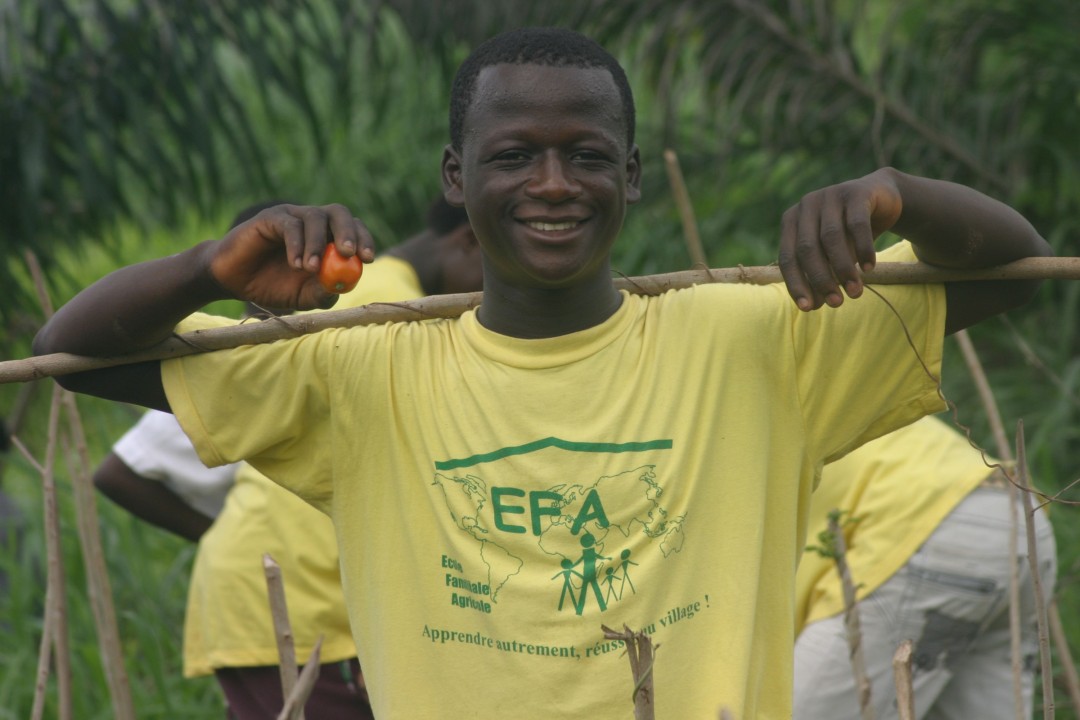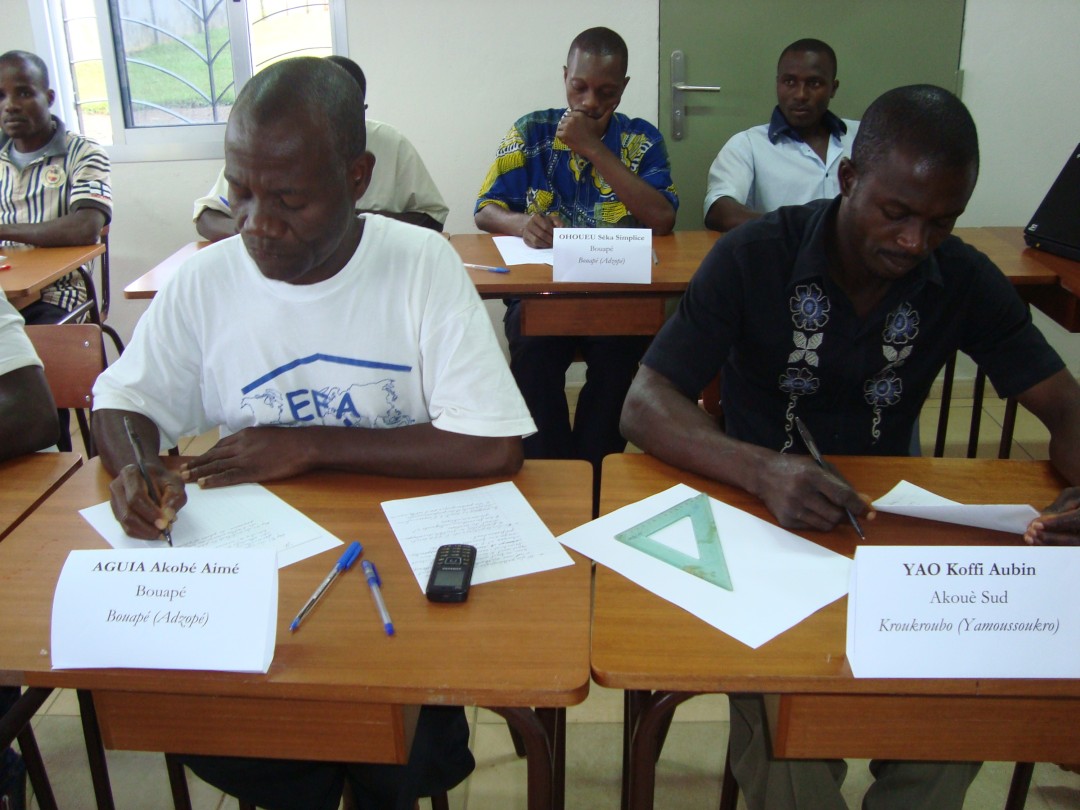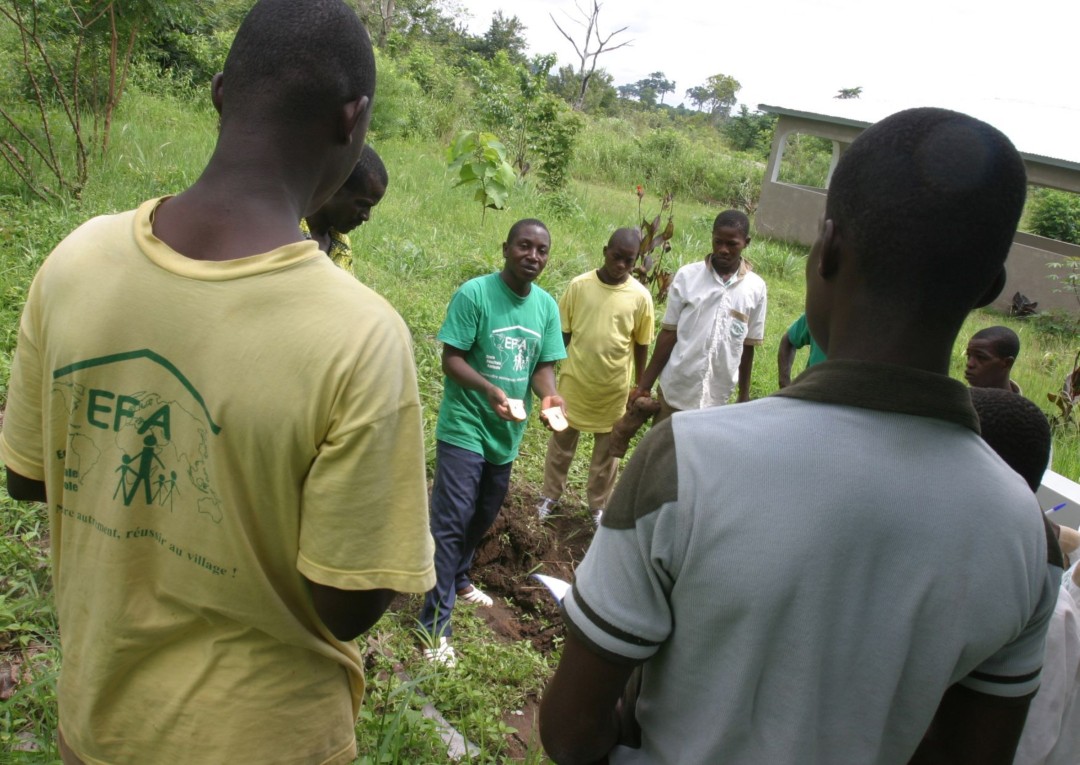Support for a training centre
The project aimed to facilitate youth access to employment and agricultural entrepreneurship by creating a new learning facility with theoretical and practical teaching methods adapted to graduates of the Family Farming Schools. Concretely, this entailed completing the construction of and equipping the Ivoirian Training Institute for Rural Entrepreneurs (IFERA) at Yamoussoukro; developing adapted teaching programs; supporting the professional insertion of the students from the institute.
In spite of the political unrest that affected Cote d’Ivoire in 2010/2011, the work to build and equip the IFERA building was completed by the end of 2012. A new two-year training course in agriculture and livestock breeding was also launched in 2012, in response to the need for formal professional training for youths. At the end of 2014, 33 youths who had completed the two-year course, participated in internship programs in various businesses (farming, livestock rearing, craft making). 55 trainers were also trained in alternative teaching methods (practice and theory). By the end of the project, IFERA was becoming a successful and recognised diploma-awarding vocational training centre in Cote d’Ivoire.
PEFACI promotes vocational training based on the “Family Farming School” (FFS) model that trains young rural entrepreneurs. It works in partnership with French NGO IECD (Institut Européen de Coopération et de Développement).
Type
Education / EnvironmentDuration
October 2010 – October 2014Location
Cote d'IvoireWith whom
PEFACI




Cote d'Ivoire
Population
24.3 million (2017)
Per Capita Income
USD 1'580/year ( 2017)
Poverty rate *
46% (2015)
Literacy rate
44% (2016)
Human Development Index
170th out of 189 countries (2018)
Côte d'Ivoire is one of the largest economies in the West African Economic and Monetary Union (WAEMU), accounting for close to 40% of the Union’s economic activity. Its development was affected by years of conflict, which led to an increase in the poverty rate from 40% in 2002 to 46% in 2015. However its impressive economic performance, with a
GDP growth rate of 8% in 2016, has resulted in a decrease in poverty. Insufficient investment in basic social services remains a challenge to child survival, in particular for children under-five (55 deaths per 1,000 live births in 2016). Public health expenditure rose from 1.7% 2011) to 5.4% of GDP (2015).
Sources: World Food Program, UNICEF, World Bank, 2016 Human Development Report, Human Development Indices and Indicators (2018 Statistical Update)
*The percentage of the population living below the national poverty line.